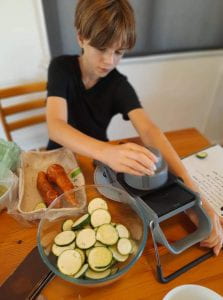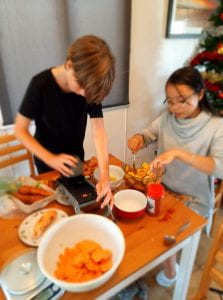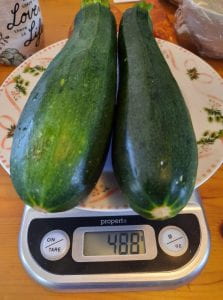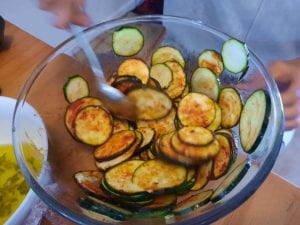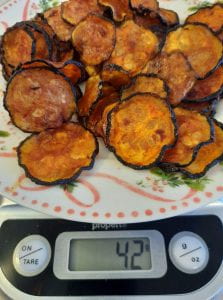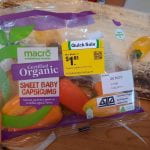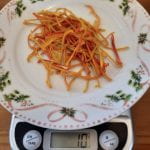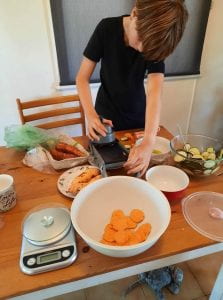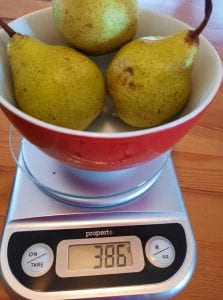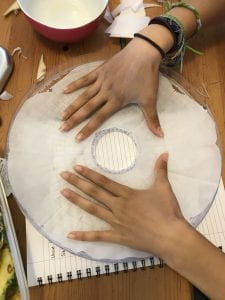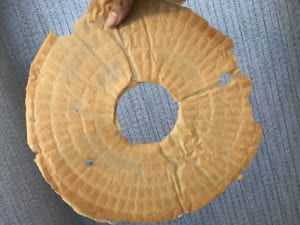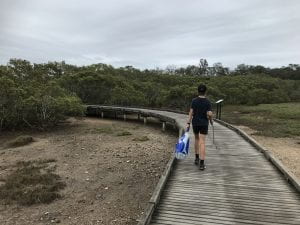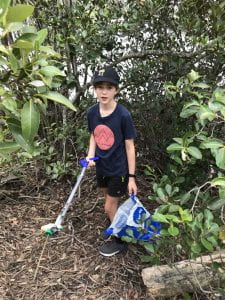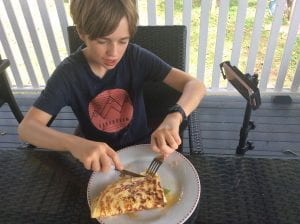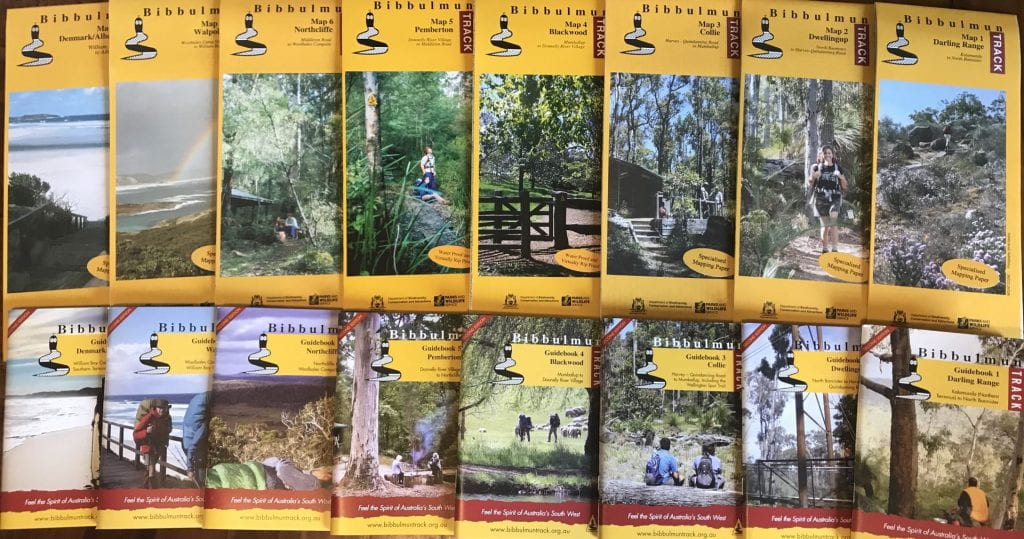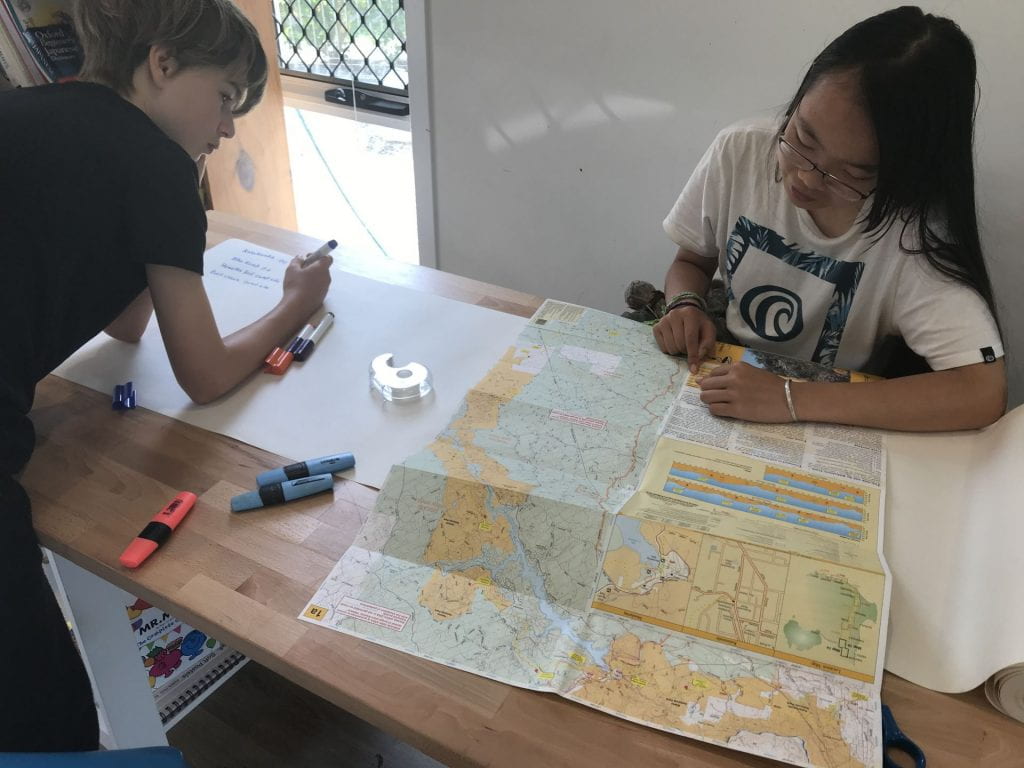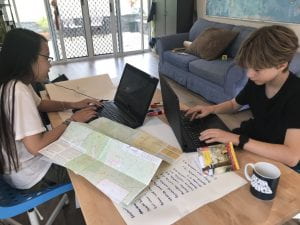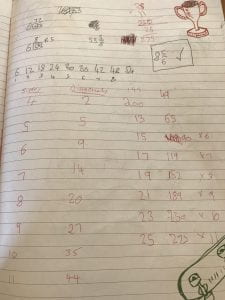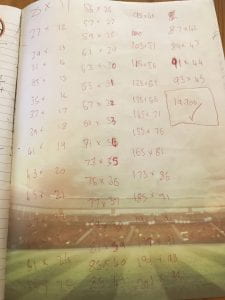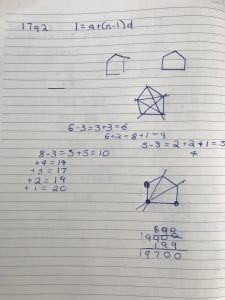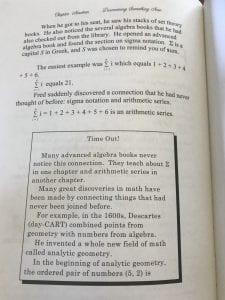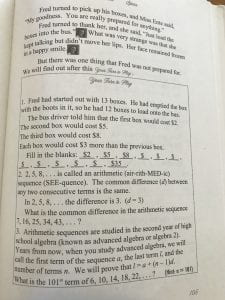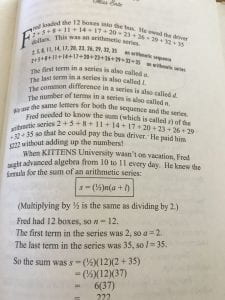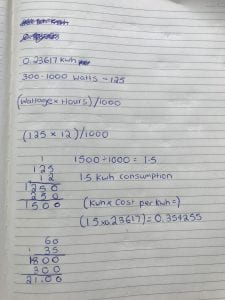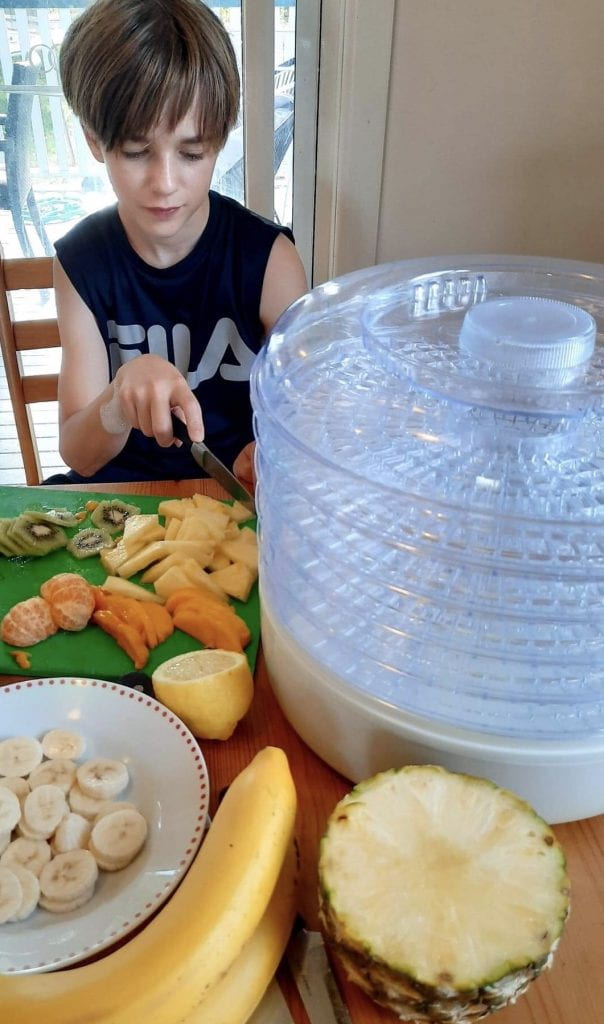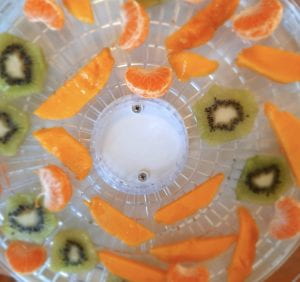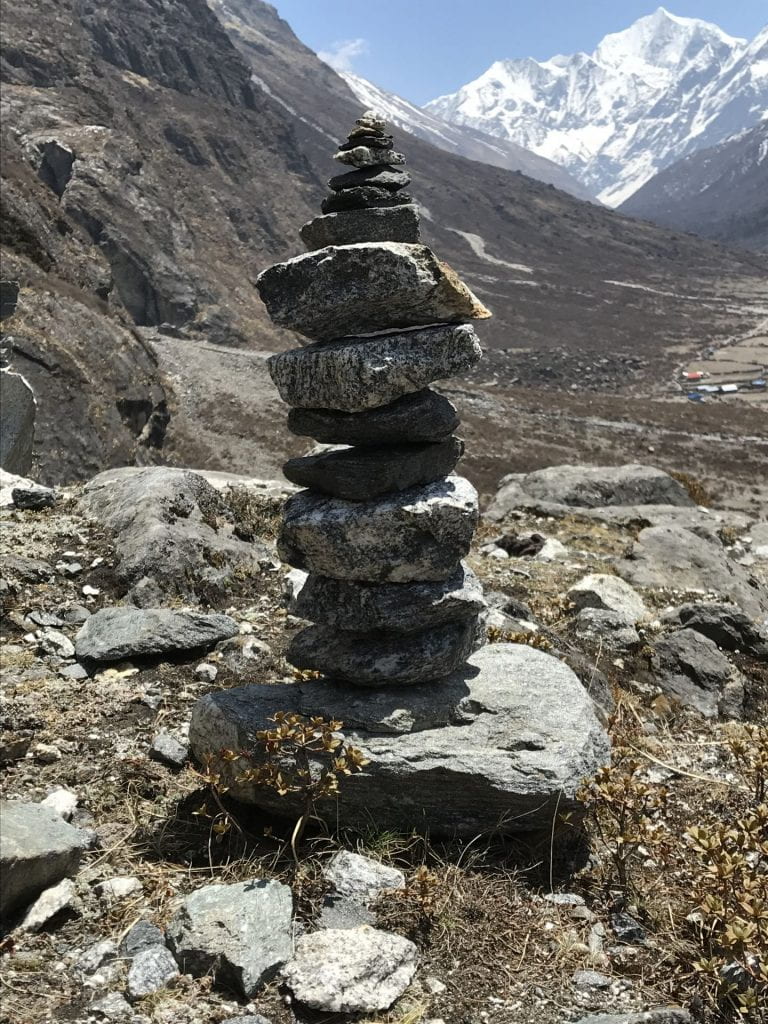Our first dehydrated camp meal
We are going on a 1 night overnight hike next weekend 🙂 This is our first overnight hike for over a year (cos of COVID)…so mostly this first little overnighter is to get us back into the swing of thru hikes, and test out the gear that has been sitting on a shelf for a while 🙂
But this post is all about the food 🙂 We have been busy reading dehydrating books and searching dehydrating tips to see what we can try out for our first attempt at actually dehydrating a camp meal 🙂
So we thought we would start simple. We will cook our regular kind of hike meal, angel hair pasta and a tin of tuna 🙂 But this time we will add some veg. We bought a mandolin so that we could slice our veg evenly, we got a Baccarat one that was worth $100 for $20 in the sales 🙂
- Lucas using our new mandolin to slice the zucchini and sweet potato evenly
- Aurora marinating our zucchini to add a little chilli to our camping pasta dish 🙂
We chose capsicum and zucchini to go into our pasta dish. Here is the zucchini being sliced, marinated in chilli, lemon oil and paprika, and dried. We thought it would add a little flavour to our pasta dish 🙂 488g worth of zucchini reduced to 42g 🙂
- 2 whole zucchinis for our pasta dinner
- Chopped and marinated in chilli lemon and paprika
- Dried…446g lighter and heaps less volume
Here are our capsicums. We bought a bag of organic ones just about to go out of date so got a bargain 🙂 Bag contained 175g of capsicums. After dehydrating…. 10g 🙂 These will get cooked with our pasta together with the zucchini.
For a snack when we arrive at camp, we thought we would have some sweet potato chips 🙂 These haven’t quite turned out like a bag of Kettle Chips unfortunately 🙂 But they taste OK and are a nutritious snack at less weight than 4 sweet potatoes 🙂 And they haven’t been deep fried 🙂
- Four sweet potatoes for our chips…721g
- Slicing the sweet potatoes 3mm thick
- After being dehydrated…81g
Then we need those energy treats that we always take on a hike with us…usually in the form of snakes, because they are a light hit of sugar to give us a boost…but unfortunately contain zero nutrition. So we thought we would try our own roll up kinda treat to give us the same boost. We blended half a pineapple and 3 pears to spread out in our dehydrator and make our own healthy roll ups. These actually turned out YUM.
- No one wants to put a pineapple in their pack 🙂 We used half of this in our roll up mixture.
- 3 pears in our roll up mixture
- We needed to put baking paper in our dehydrator for this.
- Spreading out the mixture.
- One finished pear and pineapple roll up 🙂
- Two trays of pineapple and pear roll up at 56g 🙂
We have to be careful as you could easily eat the whole lot 2 trays of roll up to yourself in one hit…and there is no way you could eat half a pineapple and 3 pears as easy 🙂 It makes you wonder about the amount of sugar we can easily consume when we eat these processed snakes or roll ups…they contain spoons and spoons of sugar and hardly any nutrition (even the so called fruit roll ups are mostly just sugar with fruit flavouring). So as long as we understand that we should limit our intake of our new home made roll ups on a hike, we are getting a natural sugar boost packed with lots of vitamins and fibre 🙂 We used half the pineapple and 3 pears, so what would weigh 1068g in our packs for this heathy treat, now will only weigh 56g 🙂
The next stage…vacuum packing our dehydrated food 🙂 Dehydrated food should last months, but vacuuming it will help it to last longer, and reduces volume 🙂 We managed to pick up a vacuum sealer that was $210 but $89 in the sales 🙂 So here is our veg and fruit for one night’s hike, all vacuum sealed:
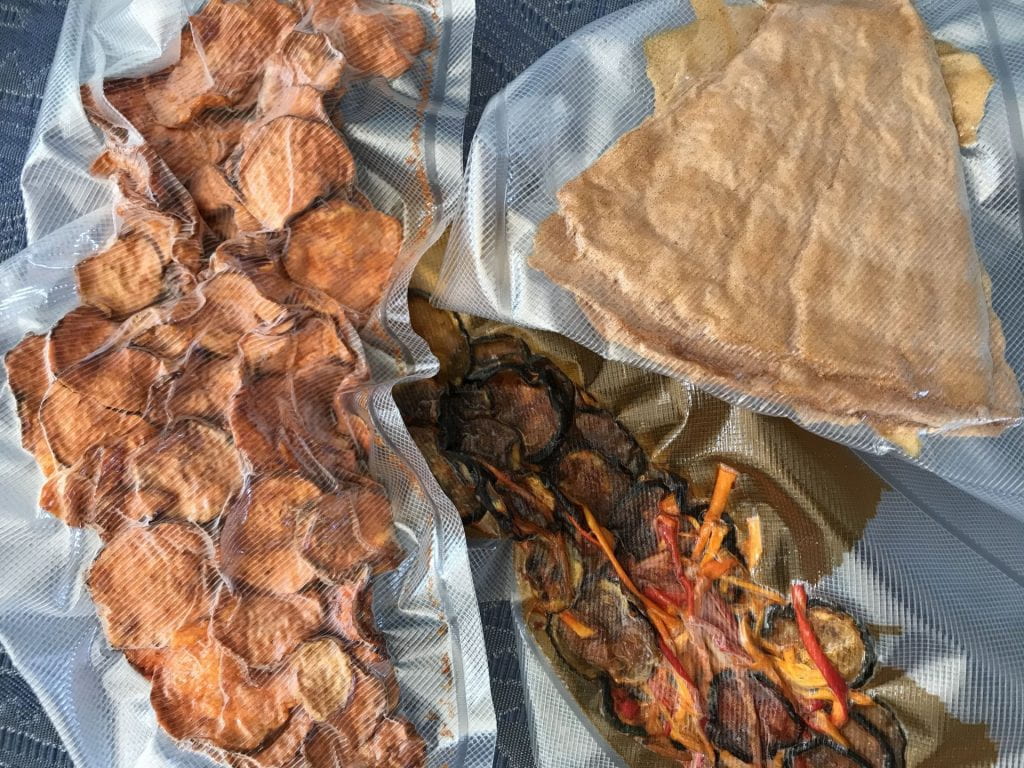
A whopping 2.472kg of healthy food reduced to 189g
We have learned that we can easily carry multiple days of nutritious fruit and veg on our hikes at this weight. But it will take an enormous amount of planning and time to dehydrate and seal for a hike that will take a few months. We will need a bigger dehydrator and silicon mats for our fruit roll ups, as it takes ages to cut paper to the shape of a round dehydrator, and peeling the paper off was not easy 🙂 But for our first attempt not a bad job 🙂 Proof will be in the eating next weekend 🙂

